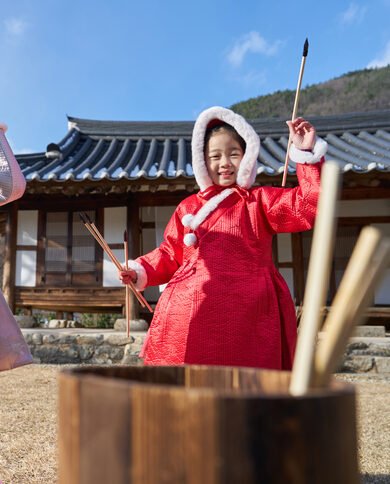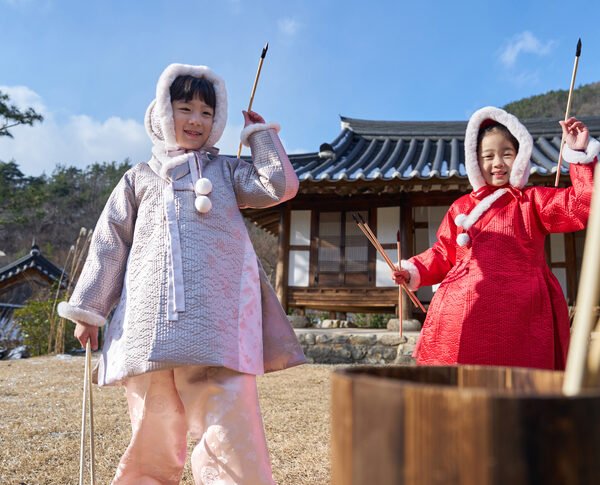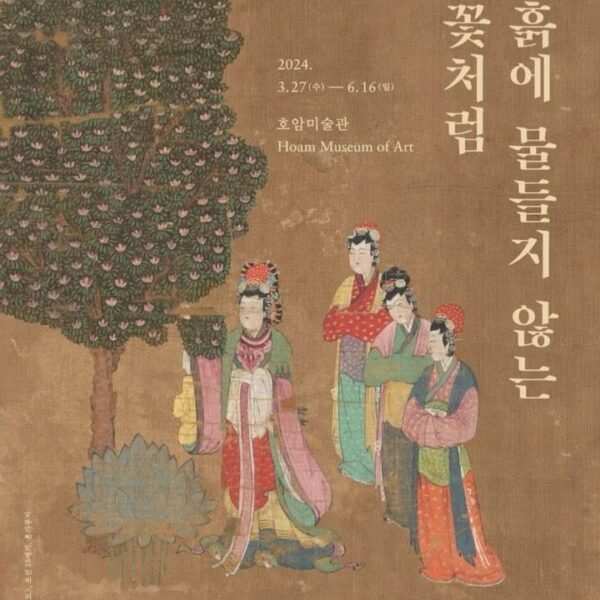Exploring Busan’s Top 7 Temples: From Beomeosa to Hwaeomsa
Nestled in the picturesque landscapes of Busan, South Korea, lies a collection of seven majestic temples, each echoing tales of spirituality, history, and cultural significance. From the tranquil Beomeosa to the serene Hwaeomsa, these temples offer a glimpse into the deep-rooted traditions that contribute to Busan’s spiritual richness.
1. Beomeosa: The Beacon of Buddhism in Busan
Founded in 678 AD, Beomeosa stands as a beacon of Buddhism in Busan. Situated on the slopes of Geumjeongsan Mountain, this temple boasts striking architectural features, including the stunning Iljumun Gate and the imposing Daeungjeon Hall. Beomeosa is not only a place of worship but also a cultural hub, hosting various events throughout the year.
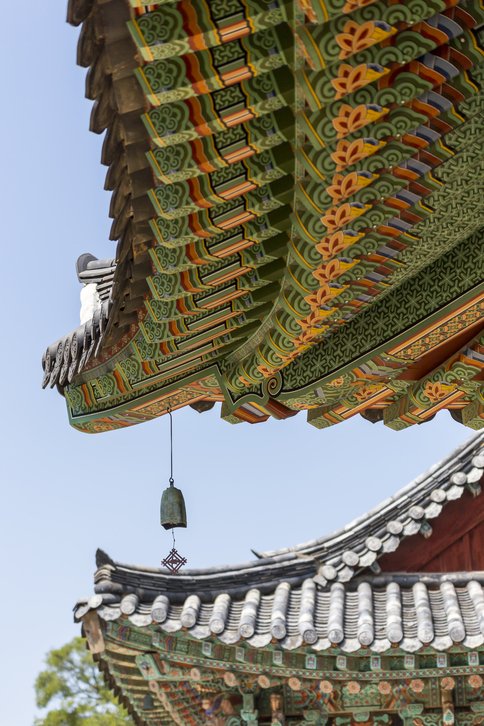
2. Samgwangsa: A Spectacle of Lights and Spirituality
Samgwangsa, known as the “Temple of the Three Lights,” is a modern temple famous for its annual lantern festival. Located on the slopes of Baekyangsan Mountain, the temple is adorned with thousands of colorful lanterns, creating a mesmerizing spectacle that attracts visitors from all over. Samgwangsa embraces a contemporary approach to Buddhist practices, making it a unique destination for spiritual seekers.
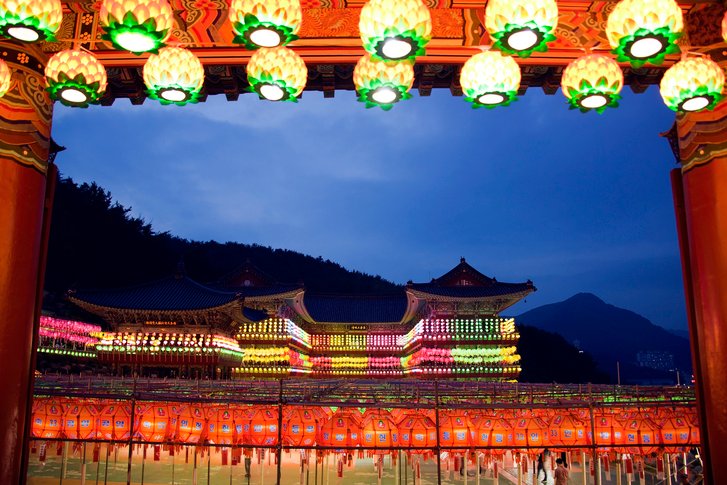
3. Haeundae Yonggungsa: Tranquility by the Sea
Perched on the coastline, Haeundae Yonggungsa offers a unique experience with its breathtaking ocean views. Unlike many inland temples, this seaside sanctuary combines Buddhist traditions with the soothing sounds of waves. The intricate architectural details, including the statue-lined staircase, add to the temple’s allure, making it a popular destination for locals and tourists alike.
Haeundae Yonggungsa Temple, located within the iconic Osiria Tourist Complex in Busan, stands as a representative and popular destination in the city. This temple is situated in a unique coastal setting, making it a picturesque landmark that attracts both domestic and international tourists.
Perched by the seaside with stunning views of the Busan sea, Haeundae Yonggungsa has become a favorite among visitors who are not only Buddhists but also those seeking to capture the beauty of a Korean temple against the backdrop of the sea. Constructed in the 1970s, this temple is renowned for its architecture featuring a rising dragon shape, making it a popular destination, especially during the annual celebration of the head monk’s visit.
- Address: 86 Haedong Yonggung-gil, Gijang-eup, Busan, South Korea
- Operating Hours: 04:00 – 20:00 (Subject to sunset time)
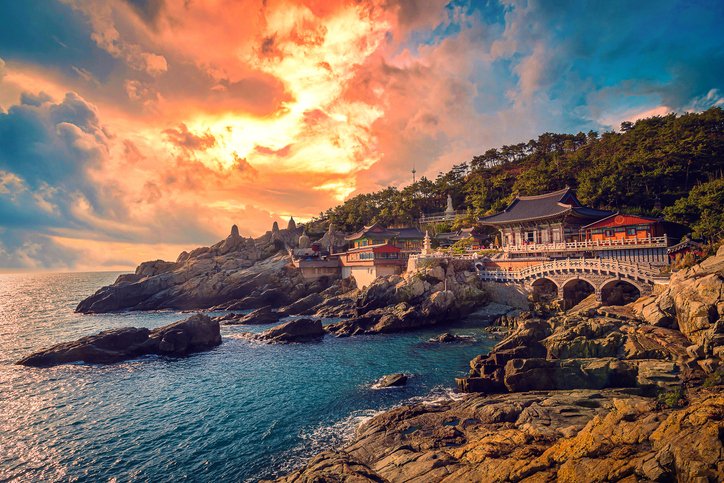
4. Seokbulsa: Carved Beauty in Stone
Seokbulsa, also known as the “Stone Buddha Temple,” is a hidden gem tucked away in the mountains. What sets this temple apart is its impressive collection of stone-carved Buddha statues. The meticulous craftsmanship and serene surroundings create an atmosphere of tranquility, providing visitors with a peaceful retreat from the hustle and bustle of city life.
Seokbulsa Temple, located in Mandeok-dong, Busan, is a magnificent temple set amidst towering natural cliffs, making it a popular destination not only among locals but also among foreign tourists.
The temple’s name, Seokbulsa, originates from the intricate stone carvings that resemble figures placed between the natural rock formations. The most notable feature is the 40-meter-high rock carved to create various Buddha statues, making it a captivating highlight of the temple.
- Address: 1 Mandeok-dong, Buk-gu, Busan, South Korea
- Operating Hours: Sunrise to Sunset

5. Jangansa: A Historical Sanctuary Amidst Nature
Founded over 1,300 years ago, Jangansa exudes historical charm. Surrounded by lush greenery, this temple is a serene sanctuary that invites contemplation and meditation. The ancient pagodas and traditional architecture speak to the rich history of Jangansa, making it a destination for those seeking a connection with the past.
Jangansa Temple is located near Mount Bulwang in Busan’s Gijang area. The temple has a rich history, having been rebuilt after being destroyed by fire during the Imjin War. It is one of the most renowned temples in the Gijang area and serves as a peaceful destination for walking around Mount Bulwang.
Jangansa is home to the Daeungjeon (Main Hall), designated as South Korea’s Treasure No. 1771, and it is registered as a local cultural heritage site in Busan. Every year, on the day when the head monk visits the temple, numerous tourists from Ulsan and Busan come to appreciate the beauty of this historical site.
- Address: 482 Jangansa-ro, Jangan-eup, Gijang-gun, Busan, South Korea
- Operating Hours: Sunrise to Sunset
6. Haeunjeongsa: Harmonizing Nature and Spirituality
Nestled in the foothills, Haeunjeongsa harmonizes with the natural landscape. The temple’s architecture seamlessly blends into the surrounding mountains, creating a sense of unity with nature. Haeunjeongsa serves as a haven for those seeking solitude and spiritual reflection, offering a retreat from the noise of urban life.
Haeunjeongsa Temple is located in front of Haeundae Jangjigeun Forest Park, making it one of the representative temples in Haeundae. It is conveniently situated close to Haeundae Subway Station, attracting many residents of Haeundae-gu who visit the temple regularly.
The main hall of Haeunjeongsa, featuring a cylindrical design with a central pillar, includes significant structures like the Dae Buljeon (Main Buddha Hall) and Gwaneum Bogung (Hall of Avalokitesvara). The temple provides a pleasant environment for strolling in the heart of Haeundae, and every year, on the day when the head monk visits, a large crowd gathers to admire the beautiful surroundings.
- Address: 4-46 Galarak-guksu 2-ro, Haeundae-gu, Busan, South Korea
- Operating Hours: Sunrise to Sunset
7. Hyewonjeongsa: A Hidden Oasis in the Hills
Hyewonjeongsa, hidden away in the hills of Busan, provides a peaceful escape for seekers of tranquility. The temple’s serene atmosphere, surrounded by nature, offers a unique setting for meditation and contemplation. Its hidden location adds to the sense of discovery for those who venture to explore Busan’s spiritual gems.
Conclusion
Busan’s seven temples, each with its unique character and charm, contribute to the city’s spiritual landscape. From the historical sanctuaries like Jangansa to the modern marvels of Samgwangsa, these temples provide a diverse range of experiences for both locals and visitors.
FAQs
- Is there an entrance fee for Beomeosa?
- Beomeosa typically does not charge an entrance fee, but donations are welcome to support the upkeep of the temple.
- When is the lantern festival at Samgwangsa held?
- The lantern festival at Samgwangsa usually takes place in May, coinciding with Buddha’s birthday. Check the official schedule for specific dates.
- Can visitors explore the interiors of Haeundae Yonggungsa?
- Yes, visitors are allowed to explore the interiors of Haeundae Yonggungsa, including the main hall and surrounding areas.
- Are there hiking trails around Jangansa?
- Yes, Jangansa is surrounded by hiking trails that offer picturesque views of the surrounding mountains. It’s a great destination for nature enthusiasts.
- How can I get to Seokbulsa from downtown Busan?
- Seokbulsa is accessible by public transportation. Take a bus or taxi to the base of Geumjeongsan Mountain and then follow the hiking trail to reach the temple.



